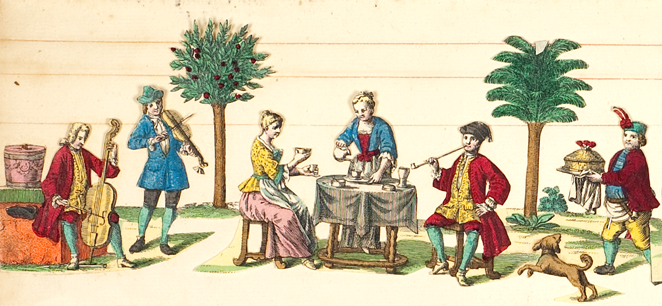Babylonian cuneiform terra cotta cone from ruins of a temple wall of Ur of the Chaldees., 2060 BCE -
- Containers:
- Bound Bound
- Extent:
- 1 cone. 12 x 4 cm.
- Scope and content:
-
- "The accompanying terra cotta cone was found several years ago by native Arabs in one of the ruin mounds of Ur of the Chaldees, the birthplace of the Biblical Abraham, now called Mugheir, on the lower Euphrates in Southern Babylonia. It was built into a temple wall with several other similar cones, to serve the purpose of the modern corner stone, with the hope that one of them might survive to tell future generations who built the temple. It bears a fine cuneiform inscription of twenty lines in two columns in the Sumerian language which was used in Babylonian before the Semitic Babylonian, and it comes from Libit-Ishtar, a prominent Babylonian king whose date has been fixed at 2060 B.C., just before the time of Abraham. This inscription is probably the best example yet discovered of the writing of the exact age of Abraham and in his own country. It is also of historical interest, for it mentions several of the early cities of the book of Genesis, the existence of which was once doubted. Its translation reads: 'The divine Libit-Ishtar, the humble shepherd of Nippur, the faithful husbandman of Nippur, who does not change the face of Eirdu, a king befitting Erech, the king of Isin, the king of Sumer and Akkad (North and South Babylonia) who captivated the heart of the goddess Ininni (Ishtar) am I. When the justice in Sumer and Akkad he had established, the temple of justice he built.'" Edgar James Banks, Field director of the Babylonian expedition from the University of Chicago, 1903-1906, to Carroll A. Wilson, n.d.
- Lipit-Ishtar, king of the city/state of Isin, reigned from ca. 1934-1923 BCE according to Gordon D. Young, Purdue University, 11 July 1975.
- Cone is designated as Lipit-Ishtar 2: 21-line cone in W. W. Hallo, "Royal Inscriptions of the Early Old Babylonian Period: a Bibliography," Bibliiotheca Orientalis XVIII No. 1/2 (Jan.-Mar., 1961), 4-14 (Z3001 .B584).
- Cone is placed in its historical context by Edmund Gordon in "Lipit-Ishtar of Isin," Dudley Peter Allen Memorial Art Museum, Bulletin, (Oberlin College, Ohio) 14 (1956) 16-27.
- Acquisition information:
- Gift. David A. Randall, Bloomington, Indiana. 1965.
Access and use
- Parent restrictions:
-
This collection is open for research.
Many collections are housed offsite; retrieval requires advance notice. Please make an appointment a minimum of one week in advance of your visit.
- Parent terms of access:
- Photography and digitization may be restricted for some collections. Copyright restrictions may apply. Before publishing, researchers are responsible for securing permission from all applicable rights holders, then filling out the Permission to Publish form.
- Location of this collection:
- Before you visit:
- Contact:
- (812) 855-2452
